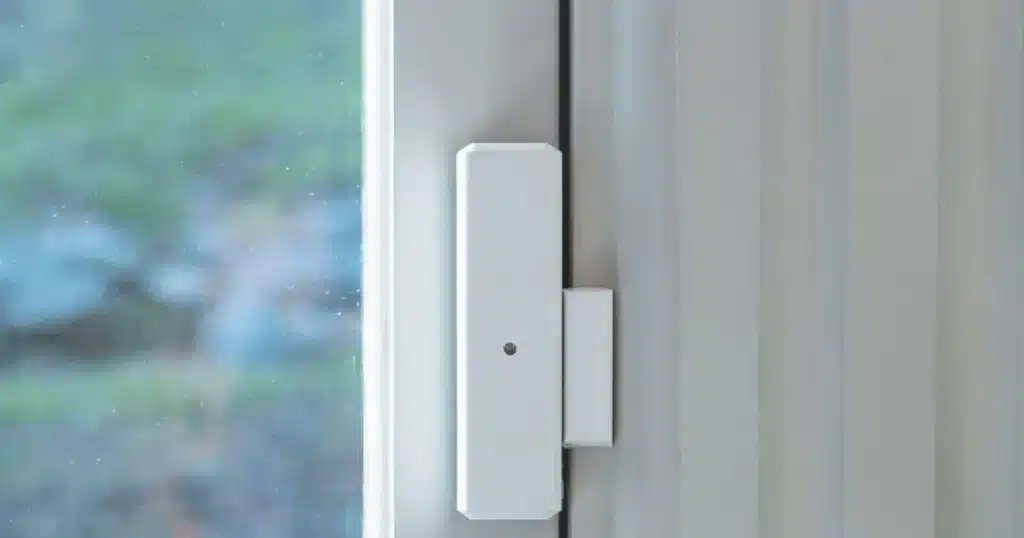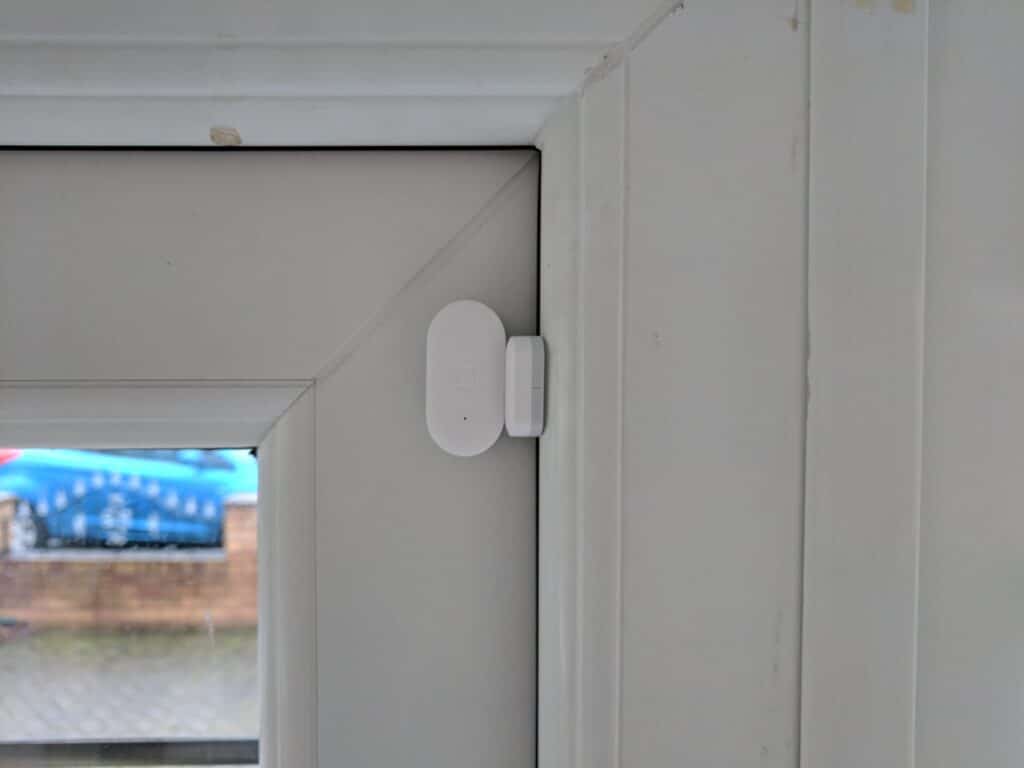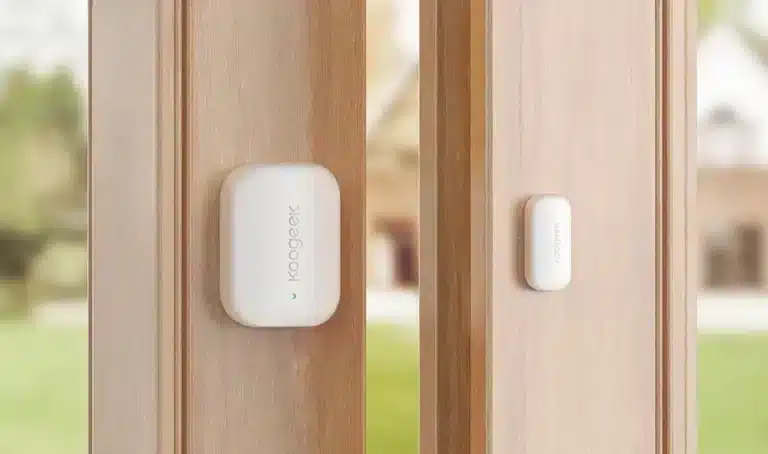Introduction
How To Fix Garage Door Sensor Alignment: Your garage door sensor alignment is crucial for the safe and efficient operation of your garage door system. These sensors, also known as photo eyes, play a vital role in preventing accidents and ensuring that your door operates smoothly. Over time, however, factors like accidental bumps, vibrations, or simply normal wear and tear can cause these sensors to fall out of alignment.
Fear not, for in this guide, we will walk you through the steps to fix your garage door sensor alignment and restore your door to its optimal functioning state. Whether you’re a seasoned DIY enthusiast or a first-time homeowner, mastering this skill will not only save you time and money, but also grant you the peace of mind that comes with a properly functioning and safe garage door system.
Your garage door’s sensors work together to stop and reverse whenever an object or person is detected. This essential safety feature prevents accidents and damage to both your property and loved ones. Yet, over time, these sensors can become misaligned due to minor impacts, vibrations, or even a slight shift in their mounting. The good news is that resolving sensor misalignment is a task well within your grasp.

How do you check garage sensor alignment?
There are a few ways that you can tell if your garage sensors are aligned. The first is by looking at the small light on each sensor. If they are both green, then they are in sync with each other. Another way to tell is by testing the system.
Inconsistent Operation: If your garage door exhibits erratic behavior, such as reversing shortly after closing or not closing at all, it’s a clear sign that the sensors might be misaligned.
Flashing Lights:If the sensor warning lights blink or flash, it may be misaligned. This may indicate that the monitors can’t communicate.
Misaligned Lights: Visually inspect the sensor lights to ensure that they are pointing directly at each other. If one or both lights are askew or not aligned with their counterpart, it’s likely that the sensors are out of alignment.
Visual Inspection: Start by visually inspecting the sensors. Ensure that they are clean, free from obstructions, and that there are no loose wires or connections. Look for any physical damage as well.
Alignment Check: Gently move the sensors to see if they pivot or swivel. If they do, they need to be adjusted. Use a level to ensure that they are both at the same height and angle.
Do garage door sensors need alignment?
They serve to detect obstructions and prevent the door from closing in order to keep you and your property safe. However, your garage door sensors need proper alignment if they are to work properly.
Safety: The primary reason for aligning garage door sensors is safety. Misaligned sensors may fail to detect obstacles, potentially leading to accidents, damage, or injuries.
Smooth Operation: Properly aligned sensors contribute to the smooth and efficient operation of your garage door.Sensors aligned doors close and open smoothly without interruptions.
Preventing Costly Repairs: Addressing misalignment issues promptly can prevent further damage to the sensors or other components of the garage door system, reducing the likelihood of costly repairs.
Visual Inspection: Regularly inspect the sensors to ensure they are clean, free from debris, and securely mounted.
Adjustment: Adjust the sensors gently to face each other if misalignment is suspected. Level them to ensure the same height and angle.
Testing: After realigning the sensors, test their effectiveness by closing the garage door and waving an object (like a broomstick) in front of the sensors. The door should reverse immediately upon detecting the object.
Why is my garage door sensor not sensing?
First off, your sensors just may need cleaned off, so try to gently remove any dust or dirt first and see if that works. If that doesn’t work, it could be electrical. The sensors must be positioned and connected to the garage door system to work.
Misalignment: Misaligned sensors often malfunction. If dust, dirt, or other debris blocks their beams, the sensors may overlook anything in the doorway not facing each other.
Obstructions: Things like spider webs, trash, and even objects can block the sensor’s beam, making it less accurate at finding obstacles.
Sunlight Interference: Direct sunlight can sometimes interfere with the sensors’ ability to transmit and receive the infrared beam, leading to false readings.
Sensor Damage: Physical damage to the sensors, their wiring, or their components can impair their functionality and cause them to stop sensing.
Electrical Issues: Problems with the power supply, wiring, or connections can disrupt the sensors’ communication and prevent them from functioning properly.
What is sensor alignment?
Active Sensor Alignment minimizes image sensor tilt and rotation, and places the center of the sensor at the lens optical axis. This is achieved through real-time analysis and adjustment of the image plane during the placement process. This ensures images are sharp and crisp, even in the corners.
Precision and Accuracy: Sensor alignment is all about achieving precision and accuracy. Sensors measure temperature, detect motion, and take pictures. Aligning the sensor ensures reliable data or signal capture.
Reference Points: Many sensors require reference points or targets for comparison. Aligning a sensor often involves positioning it relative to these reference points, enabling the sensor to recognize deviations from the expected values or conditions.
Calibration:Setting up and aligning go hand in hand. During calibration, a sensor’s outputs or data are changed to match a standard. The sensors need to be in the right place for tuning to work. The setting won’t be correct if they aren’t.
Performance: Correct sensor alignment directly impacts the performance of the device or system it is a part of. Accurate measurements, reliable data collection, and precise responses all depend on properly aligned sensors.
Efficiency: Properly aligned sensors contribute to the efficiency of operations. In industrial settings, for example, aligned sensors ensure that machines function as intended, reducing errors, downtime, and wastage.
What sensor detects alignment?
Hall Effect Sensors and Analog Ferrous Metal Position sensors detect magnetic or steel targets passing past their face to assess alignment. Ferrous Metal Position Sensors enhance analog output as steel passes by the sensor face.
Laser alignment sensors utilize laser beams to determine the relative positions of objects. They are widely used for alignment tasks that require high precision. These sensors emit laser light and analyze its reflections to calculate distances and angles accurately.
- Manufacturing: Laser alignment sensors are used in the alignment of components during assembly processes, ensuring precise fits and connections.
- Construction: They aid in aligning structures, such as buildings and bridges, to meet design specifications.
Optical alignment devices utilize light and optics to determine location and alignment. These sensors look at how grids or light patterns interact with surfaces to discover misaligned objects.
- Printing Industry: Optical alignment sensors ensure accurate graphic printing and alignment on varied materials.
- Textile Industry: They help maintain alignment in fabric cutting and printing processes.
Inertial devices, like accelerometers and gyroscopes, pick up on changes in motion and orientation. They are often used in situations where orientation changes need to be made in real time.
- Aerospace: Inertial sensors are vital for stabilizing aircraft, spacecraft, and satellites by detecting and correcting deviations from desired trajectories.
- Robotics: They enable robots to maintain balance and orientation while performing tasks.
Are all garage door sensors the same?
Sensors are usually made by garage door opener manufacturers. Most openers have distinct sensors unless they’re from the same manufacturer. However, garage door sensors are usually universal and compatible with many openers.
Trough-Beam Sensors: These consist of separate transmitter and receiver units, often mounted on opposite sides of the garage entrance, creating a continuous beam. These are more resistant to sunlight interference.
Reflective Sensors: One sensor emits a beam while the other receives it after reflecting off a reflector placed on the opposite side. These are simpler to install but can be affected by dirt or misalignment of the reflector.
Some sensors are adjustable, allowing homeowners to modify the sensing range and angle according to their needs. This can be particularly useful when considering pets or other factors that might inadvertently trigger the sensor.
Some garage door openers are incompatible with certain sensors. Before buying or replacing sensors, check compatibility. Some sensors are brand-specific.
Some monitors have extra safety features, like the ability to diagnose themselves and encrypt data to stop anyone from messing with or interfering with them. Following safety rules and industry standards is very important for a business to run safely and reliably.
How do garage door sensors work?
Sensors come in pairs, one for each side of the garage. They each have an eye, and those eyes face each other. Each eye must be able to “see” the other to signal the door to close. If they cannot send that signal, then your garage door will stop closing and reverse its motion to open again.
Most garage door sensors employ infrared beam technology. This technique emits an invisible infrared beam between two sensor units on opposite sides of the garage door, usually near the floor. This item has a transmitter and receiver.
The transmitter sends a continuous infrared beam to the receiver. The beam remains uninterrupted as the garage door opens or closes. The receiver unit detects no infrared light signal if an object interrupts the door beam.
The receiver unit alerts the garage door opener system when the infrared beam is interrupted. The opener stops and reverses the door at this signal. This quick action prevents the door from shutting on the object or person, reducing the chance of injury or harm.
To avoid garage door accidents, sensors increase safety. They are essential in households with children, pets, or cars and high-traffic business spaces.
What is the proper height for a garage door sensor?
4 to 6 inches
To avoid garage door injuries, put your sensor at the proper height. Obstruction detection is the sensor’s major function.
Most sensors have reliability and efficiency controls.
Trough-beam sensors with distinct transmitter and receiver components may need to be raised on the garage structure for infrared beam continuity. Sensors’ ideal height may change when reflectors bounce light.
Consider garage door sensor range and angle. Sensors are low to detect obstructions at children and dog heights, which cause most accidents.
The sensors must have a good view of the garage door opening. Make that the sensor lenses are clear of debris that could disrupt infrared beam transmission and reception.
What is the proper position of the garage door arm?
When the door is in the closed position, the door arm should be at an angle away from the door. If the door arm is pointing straight up and down, this will push the rail up. When the rail bows up, this adds unneeded stress on the door and operator.
The garage door arm should be far enough away to allow the door to glide smoothly along its tracks without strain. The arm should not be too close to the door, as this could lead to binding, friction, and unnecessary stress on the opener and other components.
One of the most important considerations is ensuring that the garage door arm is parallel to the garage door’s horizontal tracks. This alignment helps distribute the door’s weight evenly and prevents the door from becoming skewed or misaligned during operation.
The angle of the garage door arm also matters. As the arm moves along the track, angle it away from the door. The arm guides the door easily at this angle without binding.
Many garage door openers come with adjustable settings for the garage door arm. These settings allow you to fine-tune the arm’s position to achieve the optimal alignment and angle for your specific door and track configuration.
When positioning the garage door arm, consider the clearance around the door and the ceiling. Ensure that there is sufficient space for the arm to move freely without hitting any obstructions, such as lights, shelves, or other items in your garage.

Conclusion
You now know that the process needs close attention to detail, careful observation, and small changes. By regularly checking and realigning your sensors, you can keep them from breaking down and causing you problems that aren’t necessary. You can also help keep your house in good shape with this new skill, which will improve your do-it-yourself skills and give you more confidence as a homeowner.
As you embark on this journey of maintaining your garage door sensor alignment, remember to prioritize safety at all times. Disconnect the power, be cautious of moving parts, and take your time to ensure accurate alignment. And don’t hesitate to seek professional assistance if you encounter challenges beyond your comfort level.
A person or item triggers your garage door’s sensors to halt and reverse. This essential safety feature prevents accidents and damage to both your property and loved ones. Yet, over time, these sensors can become misaligned due to minor impacts, vibrations, or even a slight shift in their mounting. The good news is that resolving sensor misalignment is a task well within your grasp.

